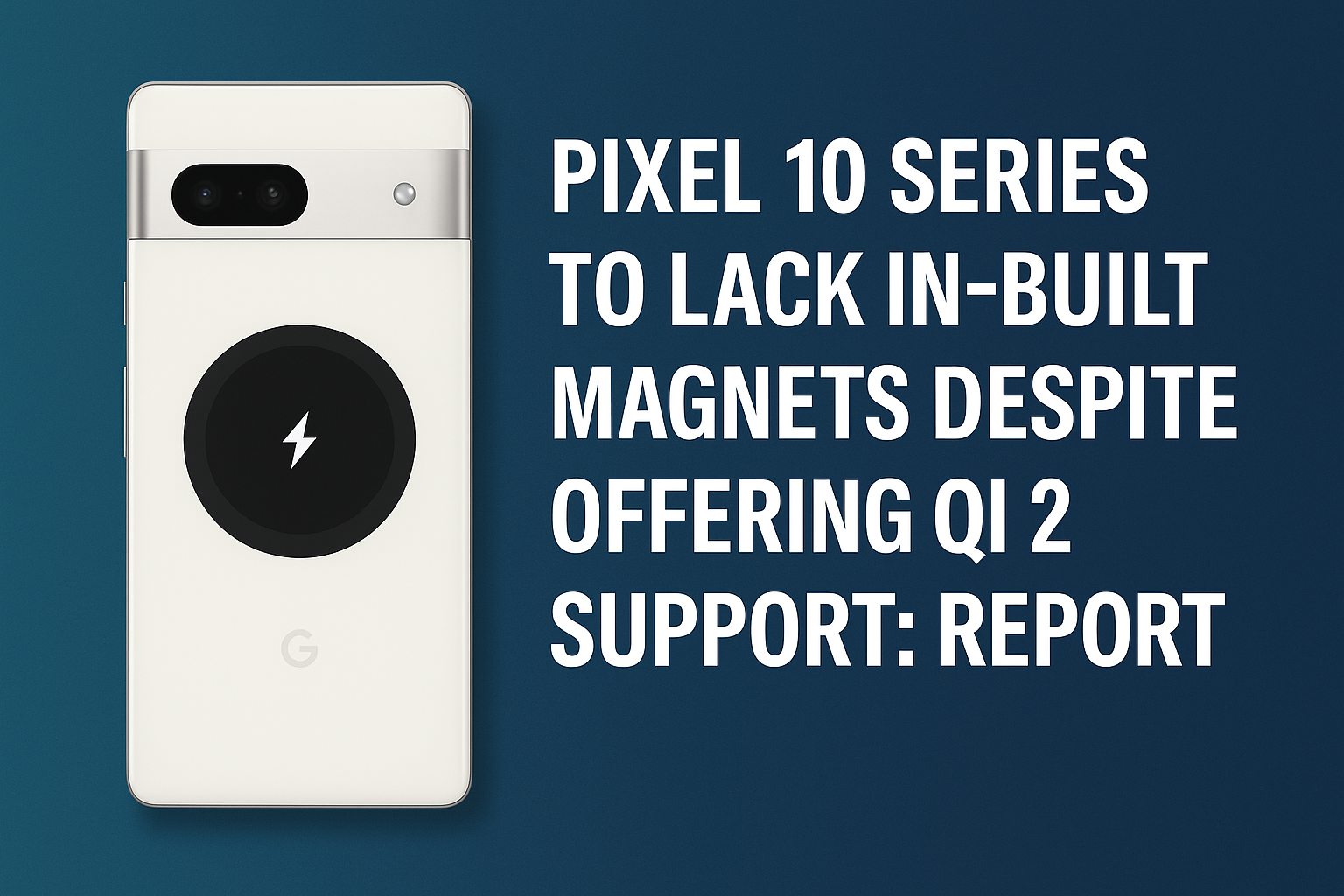In a surprising twist for Android enthusiasts, reports suggest that the upcoming Google Pixel 10 series will support the latest Qi 2 wireless charging standard, but without in-built magnets — a feature that’s integral to fully unlocking the benefits of Qi 2, especially for magnetic accessories and precise alignment.
This decision could affect accessory compatibility and charging stability, especially when compared to Apple’s MagSafe experience on iPhones.
📱 What is Qi 2 Wireless Charging?
Qi 2 is the next generation of wireless charging developed by the Wireless Power Consortium (WPC). Inspired by Apple’s MagSafe technology, Qi 2 introduces a Magnetic Power Profile (MPP) that enables:
-
Faster wireless charging
-
More secure magnetic attachment
-
Improved alignment between charger and device
Qi 2 aims to bring universal magnetic wireless charging across Android and iOS devices — but Google seems to be taking a slightly different path.
❌ No In-Built Magnets in Pixel 10 Series
According to recent leaks and insider reports, the Google Pixel 10 and Pixel 10 Pro will support Qi 2 charging protocol but omit in-built magnetic rings that are typically used to ensure precise charging pad alignment.
This means that while the Pixel 10 series will technically support Qi 2-compatible chargers, it might not magnetically snap into place, reducing some of the advantages Qi 2 is designed to offer.
🔍 Why This Matters
-
Accessory Compatibility: Many Qi 2 accessories like stands, battery packs, and mounts rely on magnetic attachment. Without magnets in the phone, these accessories may not work as intended with the Pixel 10 series.
-
Charging Efficiency: Proper alignment is crucial for peak wireless charging speed. Without magnetic guidance, the Pixel 10 may charge slower if not aligned perfectly.
-
User Experience: Users expecting a MagSafe-like experience on Android could be disappointed, as the Pixel 10 might require manual positioning on charging pads.
⚙️ Why Google Might Be Skipping the Magnets
There are a few potential reasons behind this decision:
-
Cost-saving: Skipping magnets may reduce manufacturing costs
-
Design philosophy: Google may prioritize thinner, lighter phones
-
Third-party compatibility: Google may focus on broad Qi 2 charger support, rather than proprietary accessories
That said, accessory makers may still offer magnetic cases or add-on solutions that bring the magnetic snap experience to the Pixel 10 lineup.
📦 What Else to Expect in Pixel 10 Series
While official specs are yet to be announced, the Pixel 10 and Pixel 10 Pro are expected to feature:
-
Tensor G4 chipset with improved AI capabilities
-
120Hz AMOLED display
-
Refined camera features powered by Google’s computational photography
-
Android 15 out of the box
🧠 Conclusion
The Google Pixel 10 series embracing Qi 2 without in-built magnets is a curious move that could impact the user experience for some, especially those accustomed to Apple’s MagSafe-like functionality.
While the Pixel 10 will still benefit from faster and more efficient wireless charging, the lack of magnetic attachment may leave room for third-party workarounds or future Pixel iterations to improve upon.
